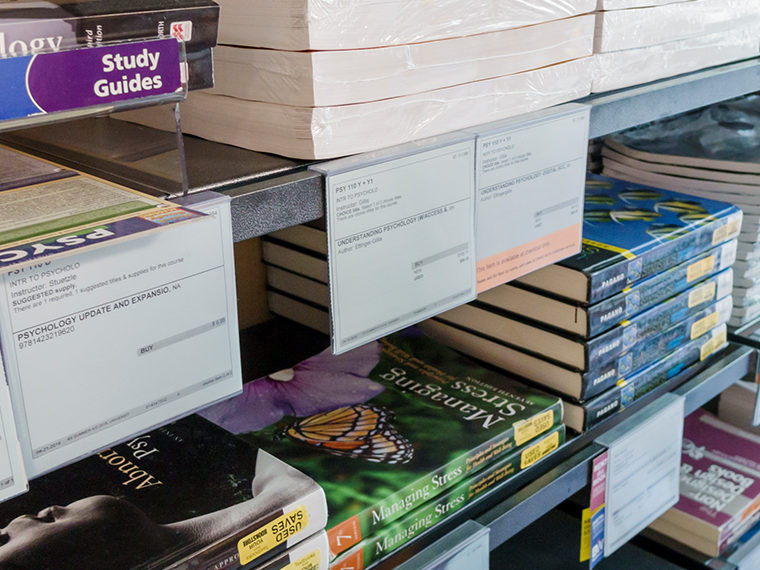Tradition bound, colleges face pressures to be nimbler, more opportunistic
It’s become almost an article of faith: U.S. universities, caught in a squeeze between rising costs and declining public support, have to become more entrepreneurial. Seek out closer ties with business. Ratchet up fundraising. Find new ways to capitalize on valuable school assets.
But unlike their corporate counterparts, college presidents are constrained in their ability to be free-wheeling entrepreneurs. They have to consider the concerns of campus traditionalists, who can be suspicious of cozy business connections. They also have to make sure that commercial activities don’t undermine a school’s teaching mission and the pursuit of pure research.
In a forthcoming paper, Loyola Marymount’s Sohvi Heaton, UCLA Anderson’s David Lewin and UC Berkeley’s David Teece offer a guide for would-be entrepreneurial leaders. Enterprising university presidents and chancellors, they say, need to be alert to looming threats and new opportunities, able to seize prospects as they arise, and willing to make big changes to adapt to rapidly changing circumstances.
Opt In to the Review Monthly Email Update.
Traditionally, campus entrepreneurship has meant partnerships with private industry, licensing of patents and other intellectual property, and direct transfer of technologies. One of the best-known examples is the licensing of gene-splicing technologies developed by researchers at Stanford and UC San Francisco in the 1970s, which led to the creation of the modern biotech industry and netted the institutions more than $200 million in licensing fees.
Recent research has focused on other entrepreneurial pursuits: real estate development, fundraising and classes in starting businesses. Commercial opportunities aren’t limited to science and engineering; rather, they increasingly are embraced by athletics, the humanities and other departments. A 2004 survey of U.S. faculty found that half of fine arts teaching staff were involved in consulting and other work outside the university, about the same as faculty in the engineering department.
“The concept of an ‘entrepreneurial university’ thus needs to extend beyond the commercialization of science to include a wide range of on- and off-campus activities,” the authors write. “This type of entrepreneurship encompasses activities that can not only increase financial resources, but also contribute to positive organizational and societal changes.”
To prepare their paper, which will shortly appear in the journal Managerial and Decision Economics, the authors examined contemporary campus entrepreneurship through academic studies, press accounts and interviews with former presidents of Stanford, Yale and UC Berkeley. They drew on an influential organizational theory, namely, “dynamic capabilities,” as a framework to guide campus leaders.
The concept, developed by Teece and others, describes how organizations marshal their unique resources to adapt to a changing environment. Whereas “ordinary” capabilities are like best practices, dynamic capabilities are grounded in an organization’s unique history, culture and organizational structure and are essential to a strategic approach to management.
“Ordinary capabilities are about doing things right,” Teece and Heaton wrote in an earlier paper. “Dynamic capabilities are about doing the right things.”
To know what the right things are first requires “sensing,” which involves scanning the external environment. “I view the role of the President as scouting for opportunities,” said former Stanford President John Hennessy in a 2015 interview, quoted in the paper.
Hennessy, currently chairman of Alphabet Inc., the parent company of Google, cited the logistical problems of living in the San Francisco Bay Area, including high housing prices and transportation issues, as an example of looming threats to the university’s continued growth that will have to be addressed by future campus leaders.
Next, entrepreneurial leaders seize on opportunities as they appear. In the early 1950s, Stanford took advantage of its vast holdings of undeveloped land around the campus to create the R&D-focused Stanford Research Park, which is now home to more than 150 companies, including Tesla, Skype and VMWare. It also leased land to the developer of the upscale Stanford Shopping Center. The school’s leased real estate holdings generate about $140 million per year, according to the school’s 2018 financial report.
The final step is perhaps the hardest: Entrepreneurial university officials are able to transform their institutions, abandoning mature or declining programs to support emerging opportunities for growth. This can mean shutting down poorly performing departments and starting new ones, changing the faculty salary structure to give greater support to research with commercial potential, and other equally challenging decisions.
Adding to the difficulty, such transformation often requires dramatic changes to an educational institution’s formal organization and, even more challenging, to its culture. Recognizing the well-known historical resistance to organizational change, these authors advocate for campus leaders to celebrate the institution’s past glory days even as they lay the foundation for future change.
“If you have a compelling argument, eventually you’ll win,” former Yale President Richard Levin said in a 2015 interview. “Transformation is having a vision and bringing people along.”
Featured Faculty
-
David Lewin
Professor Emeritus, Management and Organizations
About the Research
Heaton, S., Lewin, D., & Teece, D.J. (2018). Managing campus entrepreneurship: Dynamic capabilities and university leadership. Managerial and Decision Economics. doi: 10.1002/mde.3015






